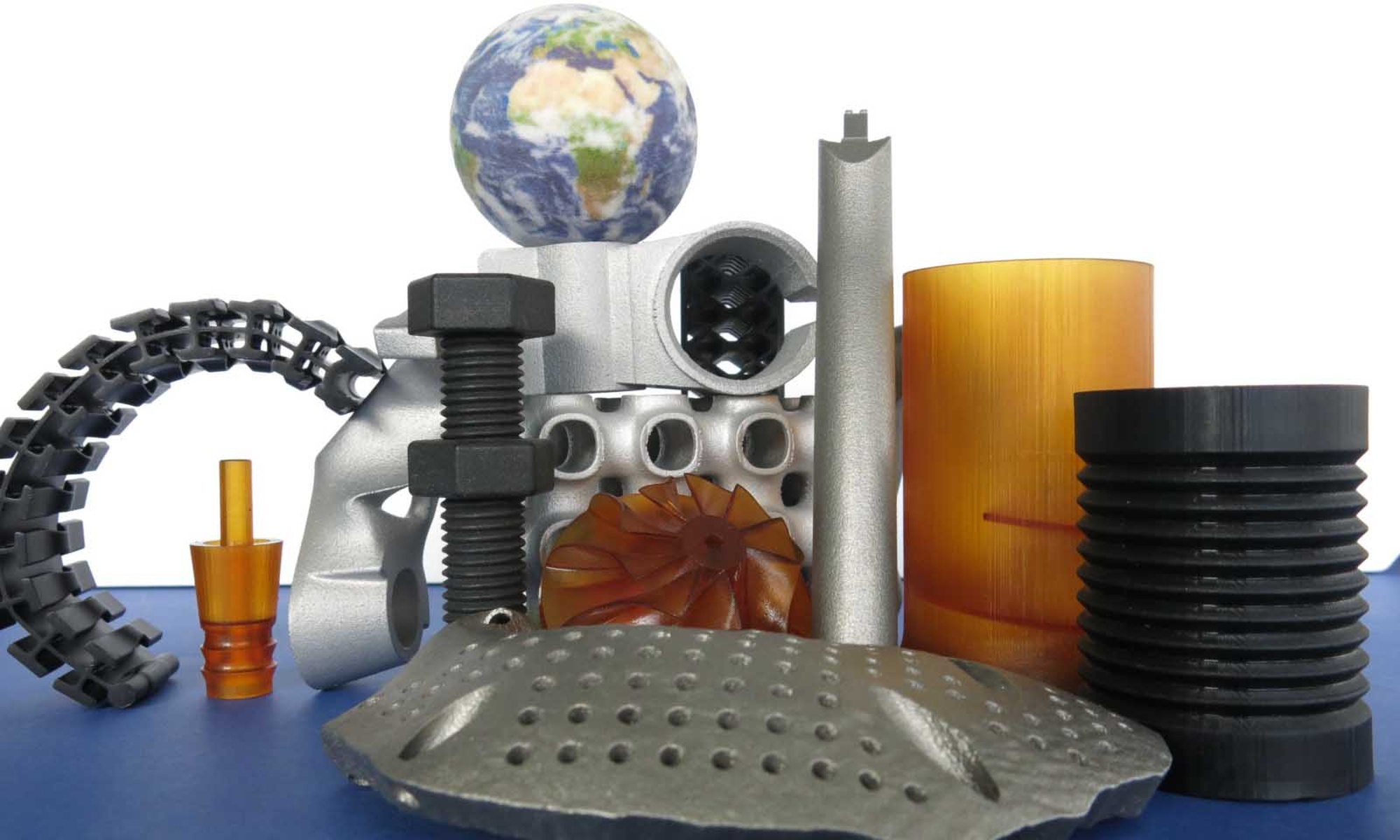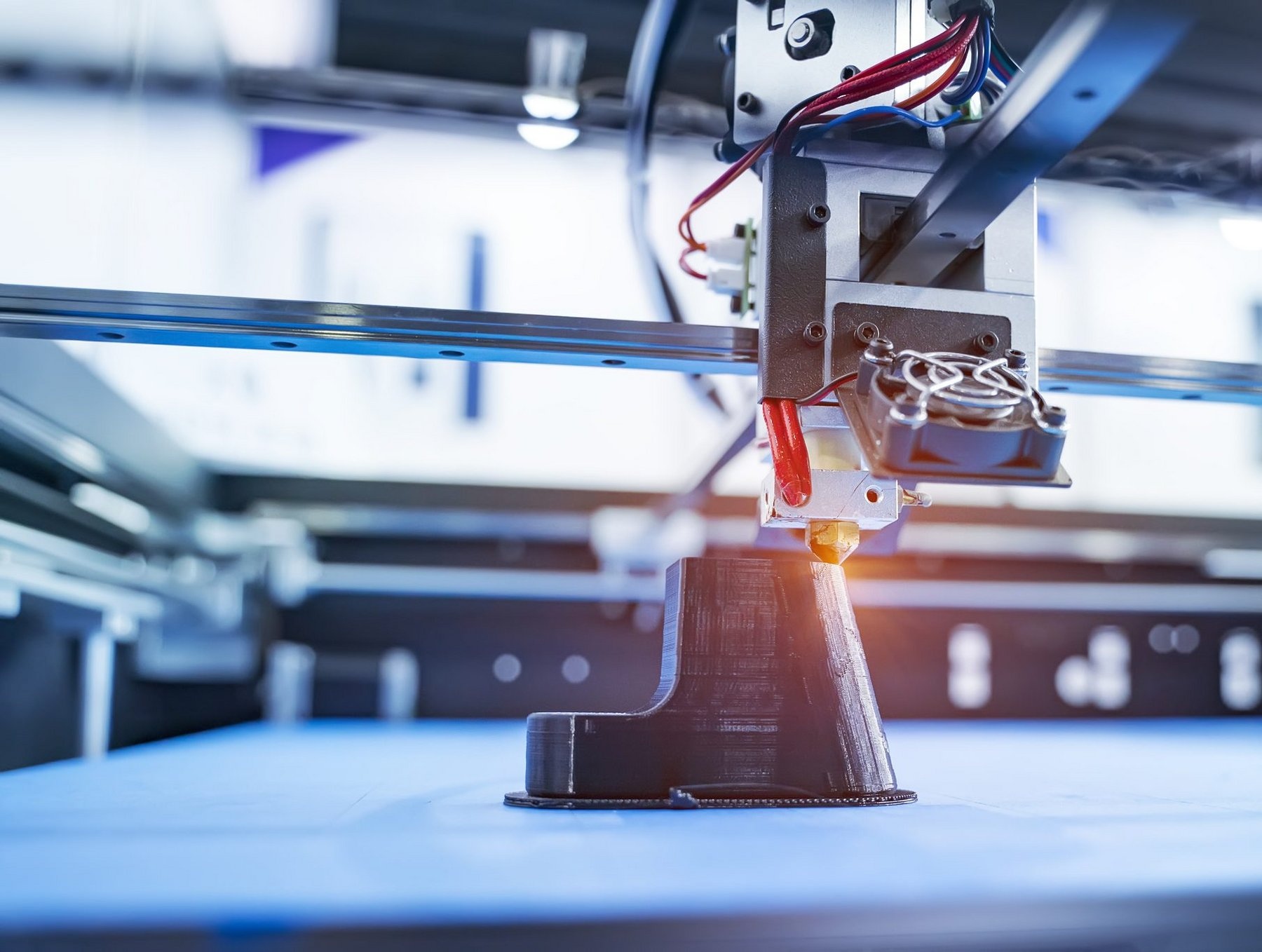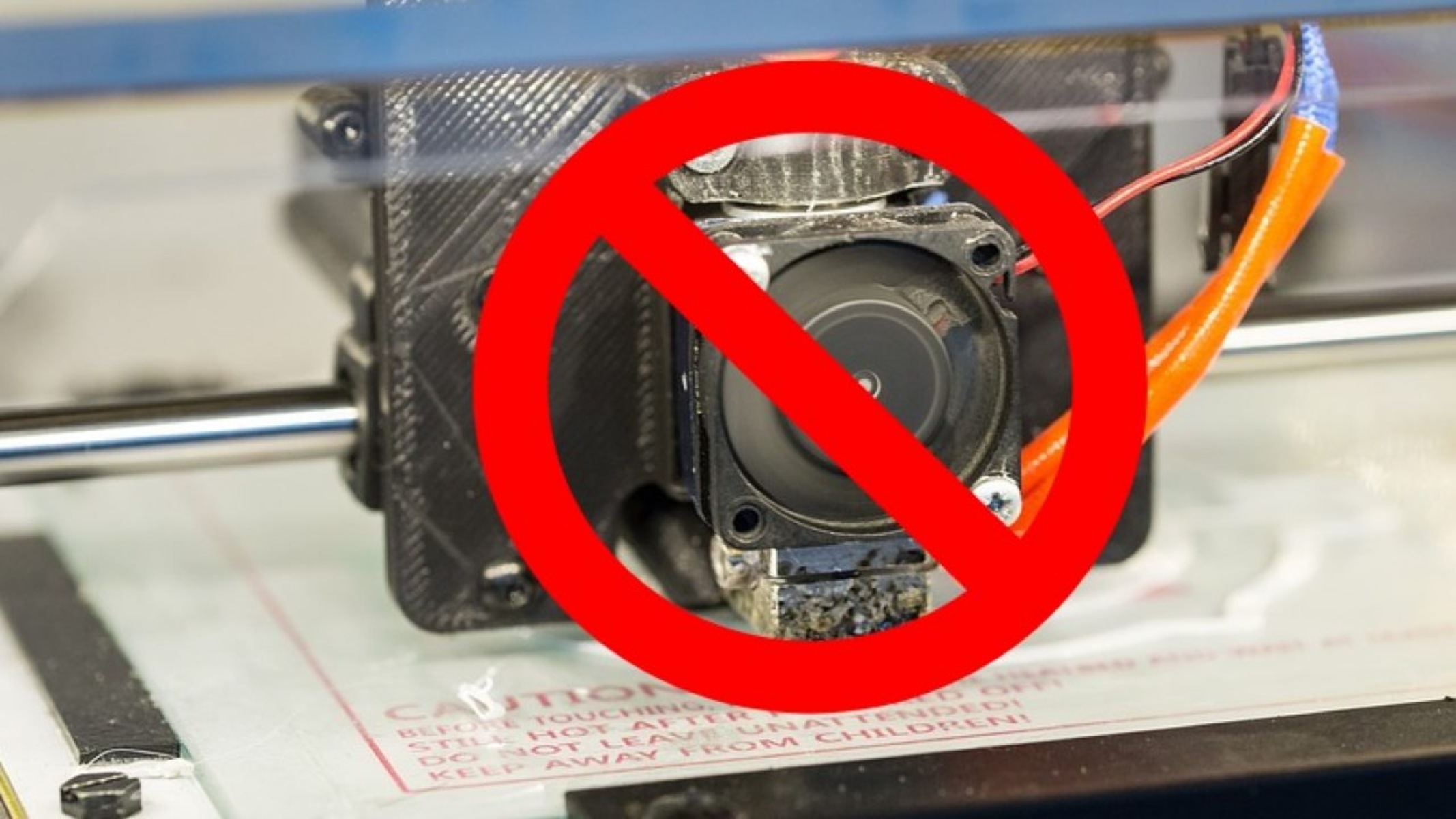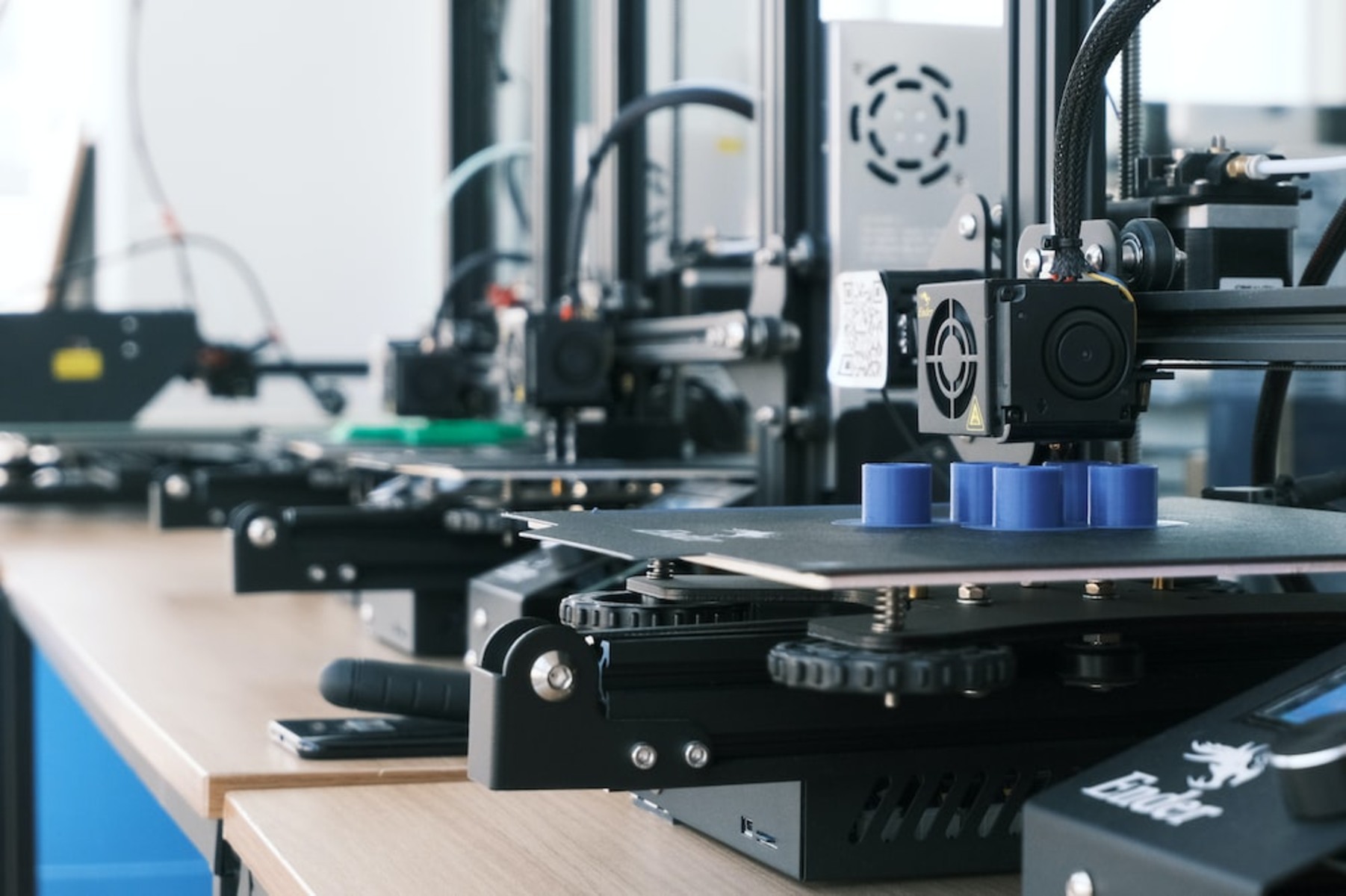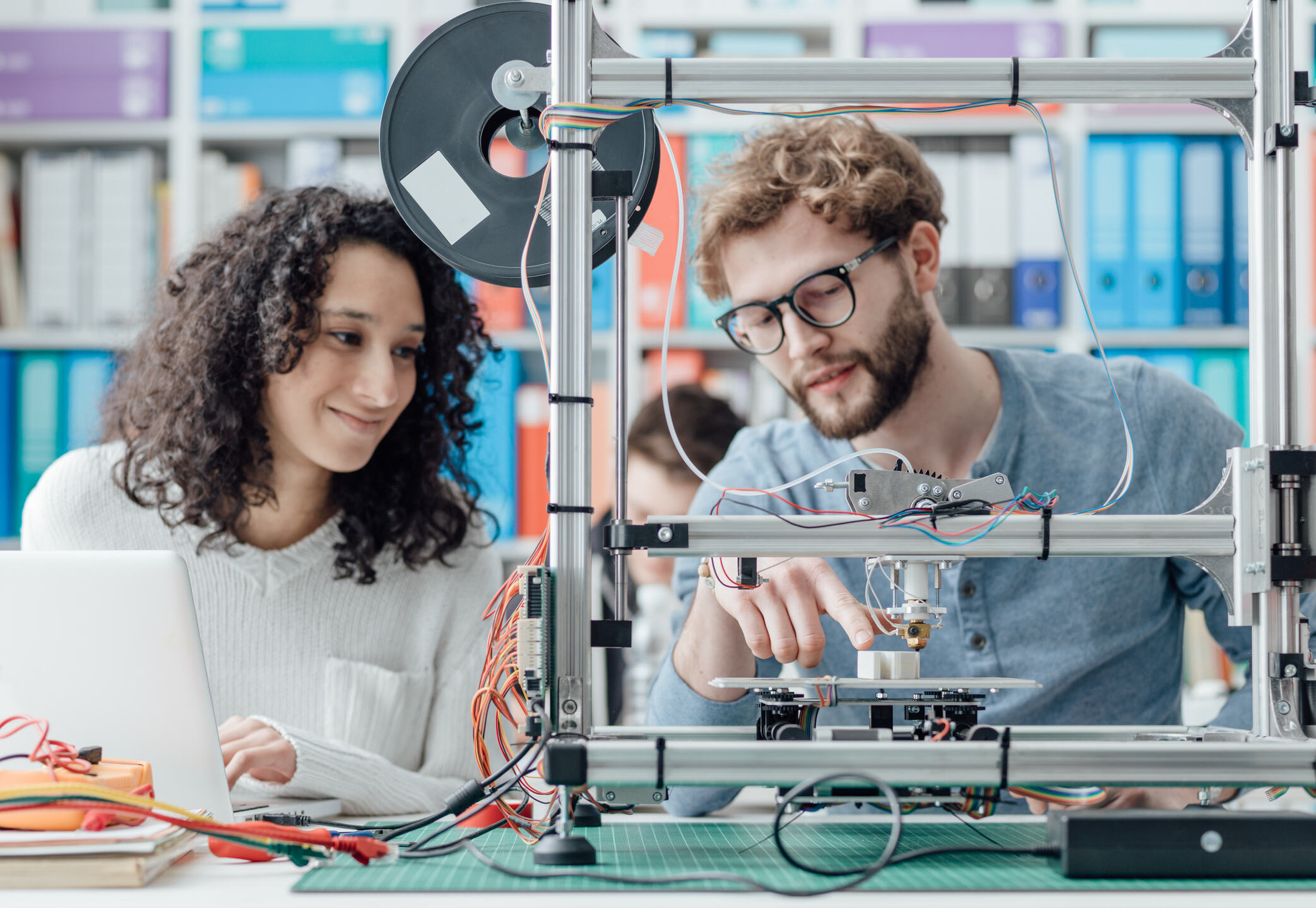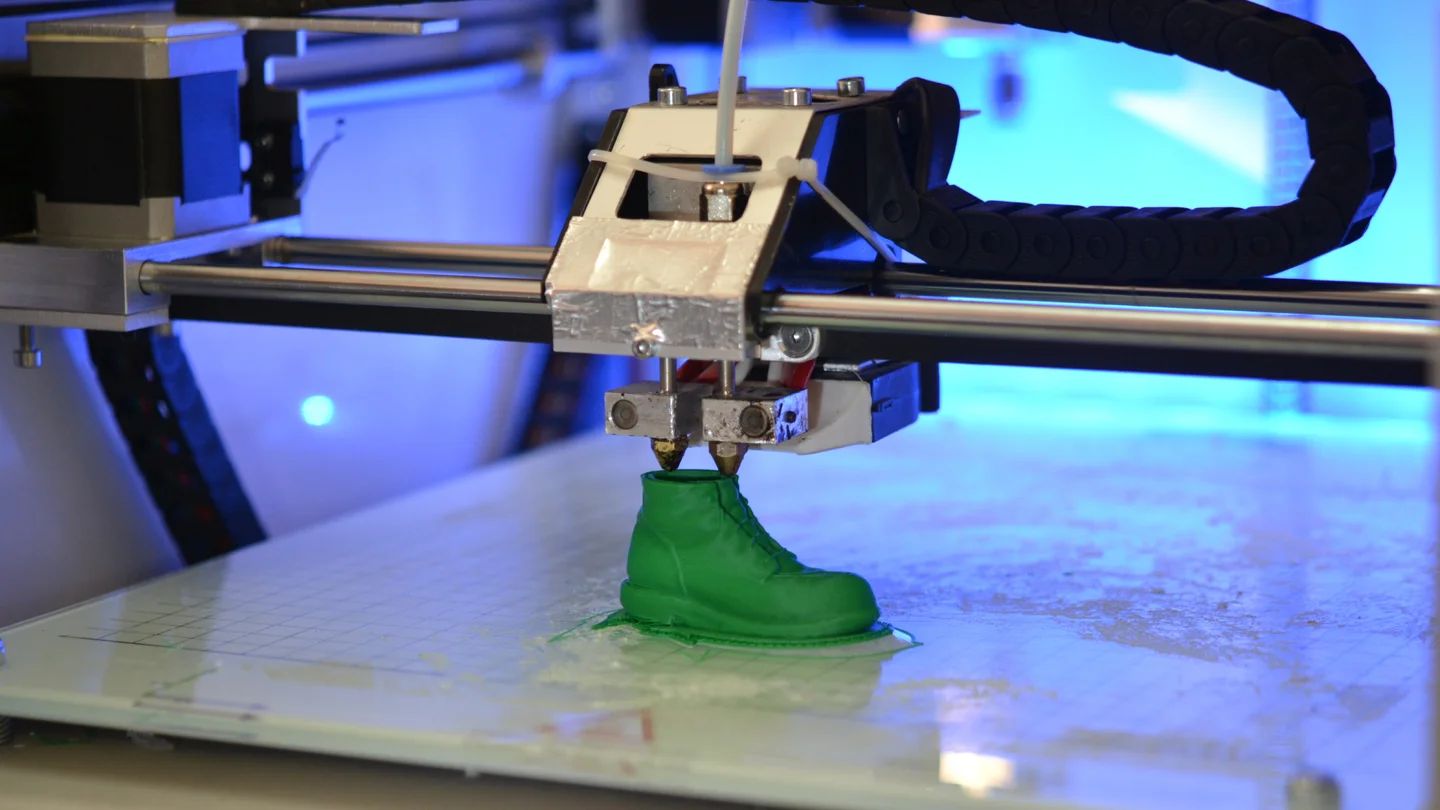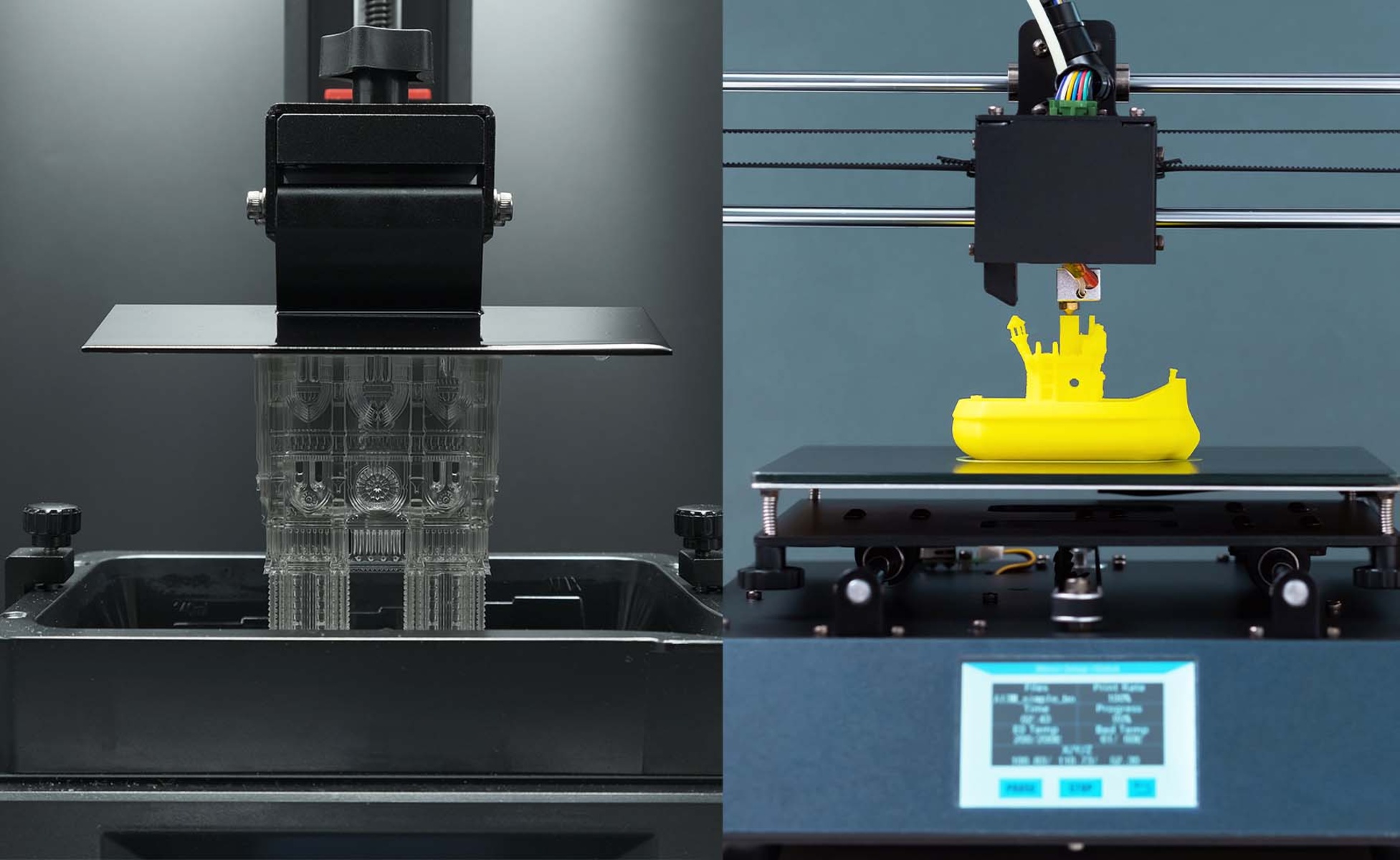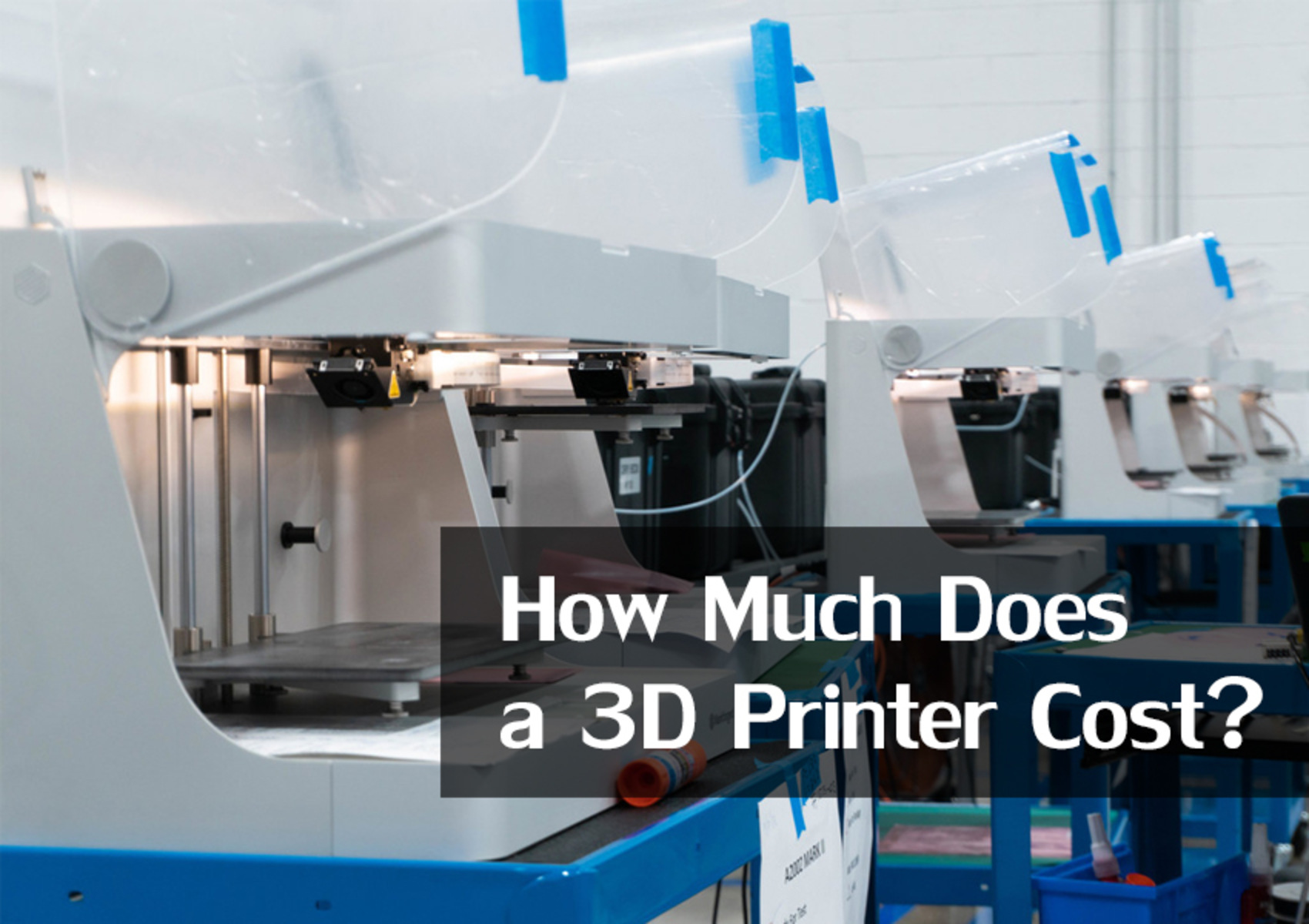Introduction
When it comes to 3D printing, choosing the right material is crucial for the success of your project. The material used not only determines the strength and durability of the printed object but also affects its aesthetic appearance and functionality. With a wide range of materials available in the market, it can be overwhelming to make a decision.
In this article, we will explore some of the most popular materials for 3D printing, their characteristics, and common use cases. Whether you are a novice or an experienced 3D printing enthusiast, this guide will help you gain a better understanding of the materials available, enabling you to choose the one that best suits your needs.
Before diving into the specific materials, it’s important to note that 3D printing materials can be broadly classified into two main categories: thermoplastics and metals. Thermoplastics are the most common materials used in consumer-grade 3D printers, whereas metals are typically employed in industrial and professional 3D printing applications.
By understanding the properties and applications of different materials, you can make informed decisions about material selection, ensuring the success of your 3D printed projects. So, without further ado, let’s dive into the world of 3D printing materials and explore their unique characteristics.
PLA (Polylactic Acid)
PLA, or polylactic acid, is one of the most commonly used materials in 3D printing. It is a biodegradable thermoplastic derived from renewable resources, such as cornstarch or sugarcane. PLA is known for its ease of use, low printing temperature, and wide range of vibrant color options.
One of the major advantages of PLA is its environmental friendliness. As a biodegradable material, PLA has a lower carbon footprint compared to other plastics. It does not release toxic fumes during the printing process, making it a safe choice for both indoor and outdoor use.
PLA prints have a smooth and glossy appearance, making them ideal for aesthetic prototypes, artwork, and decorative objects. However, it is important to note that PLA is relatively brittle and has a lower heat tolerance compared to other materials. This means that it is not suitable for functional parts that require high impact resistance or exposure to high temperatures.
Another benefit of PLA is its excellent printability. It has a low printing temperature, typically around 190-220°C, which makes it compatible with a wide range of 3D printers. It also has minimal warping and adhesion issues, making it easy to achieve high-quality prints without the need for a heated bed or specialized equipment.
PLA is commonly used in various fields, including prototyping, hobbyist projects, educational institutions, and architectural models. It is also a popular choice for beginners due to its ease of use and affordability.
In summary, PLA is an environmentally-friendly material that offers ease of use, vibrant colors, and a smooth finish. While it may not be the best choice for parts that require high durability or heat resistance, it is ideal for decorative and non-functional prints. Whether you are a beginner or an experienced 3D printing enthusiast, PLA is a versatile and accessible material for a wide range of applications.
ABS (Acrylonitrile Butadiene Styrene)
ABS, short for Acrylonitrile Butadiene Styrene, is another commonly used material in 3D printing. It is a petroleum-based thermoplastic that offers a balance between strength, flexibility, and durability. ABS is known for its toughness and resistance to impact, making it suitable for functional parts and prototypes.
One of the key advantages of ABS is its high heat resistance. It can withstand higher temperatures compared to PLA, making it suitable for parts that will be exposed to heat or used in hot environments. This makes ABS a popular choice for applications such as automotive components, electrical enclosures, and functional prototypes.
ABS prints have a matte finish and can be easily sanded and painted, providing more post-processing options compared to other materials. However, it is worth noting that ABS is more prone to warping and requires a heated bed or an enclosure to prevent the bottom layers from curling or detaching during printing.
Another important consideration when working with ABS is its emissions during printing. ABS can release fumes that may have a strong odor and are known to potentially irritate the respiratory system. It is advisable to use ABS in a well-ventilated area or with the aid of a fume extractor to ensure safety.
ABS is widely used in industries such as automotive, aerospace, and engineering, where strong and durable parts are required. It is also a popular choice for functional prints, mechanical assemblies, and prototype iterations due to its ability to withstand stress and impact.
In summary, ABS is a versatile and durable material suitable for functional parts and applications that require heat resistance. While it may require special considerations such as a heated bed and proper ventilation, its strength and post-processing capabilities make it a popular choice among experienced 3D printing users.
PETG (Polyethylene Terephthalate Glycol)
PETG, or Polyethylene Terephthalate Glycol, is a popular material for 3D printing due to its combination of strength, flexibility, and ease of use. It is a transparent thermoplastic that offers excellent mechanical properties, making it suitable for a wide range of applications.
One of the key benefits of PETG is its impact resistance. It is more durable and less brittle compared to materials like PLA or ABS, making it ideal for objects that may undergo stress or potential impact. This makes PETG a suitable choice for functional parts, such as gears, brackets, and mechanical components.
In addition to its strength, PETG offers good chemical resistance and is resistant to UV radiation, making it suitable for outdoor applications. It is also hygroscopic, meaning it absorbs moisture from the air, so it is important to store PETG filament in a dry environment to prevent degradation of print quality.
Another advantage of PETG is its ease of printability. It has a wide printing temperature range, typically around 220-240°C, which makes it compatible with a variety of 3D printers. PETG exhibits minimal warping and adhesion issues, and it does not require a heated bed for successful printing, although using one can further improve bed adhesion.
PETG prints have a glossy finish and offer transparency, allowing for the creation of visually appealing objects. It is also possible to achieve matte finishes or even print PETG in different colors, depending on the desired aesthetic result.
PETG is commonly used in applications that require strength, flexibility, and clarity, such as mechanical parts, functional prototypes, containers, and medical devices. It is a versatile material that provides a balance between the mechanical properties of ABS and the ease of use of PLA.
In summary, PETG is a strong, flexible, and easy-to-use material for 3D printing. Its impact resistance, chemical resistance, and transparency make it suitable for a variety of applications. Whether you are a hobbyist or a professional, PETG is worth considering for your projects that require a combination of strength and aesthetic appeal.
Nylon
Nylon is a versatile and durable material that is widely used in 3D printing for its excellent mechanical properties. It is a synthetic thermoplastic polymer known for its strength, flexibility, and resistance to wear and tear.
One of the key advantages of nylon is its high strength-to-weight ratio. It is significantly stronger than other common 3D printing materials like PLA or ABS, making it suitable for applications that require load-bearing parts or high impact resistance. Nylon parts can withstand heavy loads and endure prolonged use without deformation.
Nylon also offers exceptional flexibility, allowing it to bend and flex without breaking. This makes it a popular choice for applications that require parts with some degree of elasticity or shock absorption, such as functional prototypes, mechanical components, and tooling fixtures.
In addition to its strength and flexibility, nylon has good chemical resistance and is resistant to abrasion. It can withstand exposure to various chemicals and solvents, making it suitable for applications in industries such as automotive, aerospace, and manufacturing.
When it comes to printability, nylon can be more challenging compared to other materials. It requires a higher printing temperature, typically ranging from 240-260°C, and a heated bed to prevent warping and ensure proper adhesion. Nylon also absorbs moisture from the environment, so it is important to store and dry the filament properly before use to avoid irregularities in the print.
Post-processing nylon prints can also be more involved. Due to its porous nature, the surface of nylon prints may appear rough. However, sanding, polishing, or applying a solvent treatment can help achieve a smoother finish. It is also possible to dye or color nylon prints to add visual appeal to the final product.
In summary, nylon is a strong, flexible, and durable material suitable for applications that require high mechanical strength and resistance to wear and tear. While it may require specific printing conditions and post-processing steps, the exceptional properties of nylon make it a popular choice in various industries for functional and heavy-duty applications.
TPU (Thermoplastic Polyurethane)
TPU, or Thermoplastic Polyurethane, is a flexible and elastic material widely used in 3D printing for its unique properties. It is a versatile thermoplastic polymer that offers a combination of flexibility, durability, and impact resistance.
One of the main advantages of TPU is its exceptional flexibility. It is a rubber-like material that can be stretched and bent without breaking, making it ideal for applications that require parts with elasticity and shock absorption. TPU prints are commonly used in industries such as footwear, sporting goods, and prosthetics.
In addition to its flexibility, TPU also offers excellent durability and impact resistance. It can withstand external forces without deforming or losing its original shape. This makes TPU suitable for applications that require parts with high wear resistance, such as seals, gaskets, and protective cases.
TPU is also known for its excellent chemical resistance, making it resistant to a wide range of oils, solvents, and chemicals. This property allows TPU prints to maintain their integrity even when exposed to harsh environments, making it popular in industries such as automotive and industrial manufacturing.
Printability is a key consideration when working with TPU. It requires a lower printing temperature compared to materials like ABS or nylon, typically around 200-220°C. TPU also benefits from a heated bed to ensure proper bed adhesion and minimize warping. Additionally, due to its flexible nature, it is recommended to use a direct drive extruder to prevent filament slipping or buckling during the printing process.
Post-processing TPU prints is relatively simple. The surface of TPU prints is usually smooth, but some sanding or polishing may be required to achieve the desired finish. TPU prints can also be dyed or colored using appropriate dyes or paints to enhance their visual appeal.
In summary, TPU is a flexible, durable, and chemically resistant material ideal for applications that require elasticity and impact resistance. Its unique properties make it suitable for a wide range of industries, from footwear and sporting goods to industrial manufacturing and consumer products.
ASA (Acrylonitrile Styrene Acrylate)
ASA, or Acrylonitrile Styrene Acrylate, is a durable and weather-resistant material commonly used in 3D printing. It is a thermoplastic similar to ABS but with enhanced properties that make it ideal for outdoor applications.
One of the key advantages of ASA is its excellent UV resistance. It can withstand prolonged exposure to sunlight without significant degradation or color fading. This UV stability makes ASA a popular choice for outdoor signage, architectural models, and functional parts that will be exposed to the elements.
In addition to its UV resistance, ASA offers good impact resistance, making it suitable for applications that require durable and long-lasting prints. It has similar mechanical properties to ABS and provides a high-level of strength and toughness.
ASA also exhibits excellent chemical resistance, making it resistant to various chemicals, solvents, and acids. This property makes ASA prints suitable for applications in industries such as automotive, marine, and electronics, where exposure to chemicals is common.
When it comes to printability, ASA is similar to ABS and requires similar printing conditions. It has a higher printing temperature, typically around 230-250°C, and benefits from a heated bed to prevent warping and ensure proper adhesion. ASA also releases fumes during the printing process, so it is important to use it in a well-ventilated area or with a fume extraction system.
Post-processing ASA prints is relatively straightforward. The surface finish of ASA prints is usually smooth and can be further improved through sanding, polishing, or applying a coat of paint or primer.
In summary, ASA is a durable and weather-resistant material ideal for outdoor applications. Its UV resistance, impact resistance, and chemical resistance make it suitable for a wide range of industries and applications. Whether you need to create outdoor signage, functional parts, or prototypes that can withstand the elements, ASA is a reliable choice.
HIPS (High Impact Polystyrene)
HIPS, or High Impact Polystyrene, is a popular material in 3D printing known for its high impact resistance and versatility. It is a lightweight thermoplastic that offers a balance between strength, affordability, and ease of use.
One of the main advantages of HIPS is its exceptional impact resistance. It can withstand external forces without breaking or cracking, making it suitable for applications that require parts with high durability and toughness. HIPS prints are commonly used in industries such as automotive, electronics, and packaging.
Another benefit of HIPS is its affordability. It is one of the more cost-effective materials available for 3D printing, making it an economical choice for both hobbyists and professionals. This affordability, combined with its ease of printing, makes HIPS a popular material for prototyping and creating low-cost functional parts.
HIPS is also known for its excellent dimensional stability, meaning it retains its shape well over time and is less prone to warping compared to other materials. This property makes HIPS prints more accurate and reliable, allowing for the creation of intricate and complex designs.
When it comes to printability, HIPS is fairly easy to work with. It has a low printing temperature, typically around 210-240°C, making it compatible with a wide range of 3D printers. HIPS also adheres well to a heated bed, and it can be easily dissolved using a solvent, such as Limonene, making it a popular choice for support structures in dual extrusion prints.
Post-processing HIPS prints is straightforward. The surface of HIPS prints is usually smooth, but some sanding or polishing may be required to achieve a desired finish. HIPS prints can also be easily glued or painted to enhance their visual appeal.
In summary, HIPS is a versatile and cost-effective material for 3D printing. Its high impact resistance, affordability, and ease of use make it suitable for a variety of applications, from functional prototypes to low-cost production parts. Whether you are a beginner or an experienced 3D printing enthusiast, HIPS is a reliable choice for your projects.
PVA (Polyvinyl Alcohol)
PVA, or Polyvinyl Alcohol, is a water-soluble material often used as a support structure material in 3D printing. It is a synthetic polymer that offers excellent solubility in water, making it easy to remove from complex prints and leaving behind clean, intricate details.
One of the main advantages of PVA is its ability to dissolve in water. This property makes it an ideal choice for creating support structures for prints with overhangs, intricate designs, or complex geometries. Once the print is complete, the PVA support can be dissolved away by placing the object in water, leaving behind a clean final print.
PVA is compatible with a wide range of materials used in dual extrusion setups, such as PLA or ABS. It adheres well to the primary material during the printing process, providing effective support during a print job. This makes it a valuable material for creating supports that are easy to remove without damaging the main print.
Aside from its use as a support material, PVA has other unique properties that make it suitable for certain applications. It is biodegradable and non-toxic, making it an environmentally friendly option. PVA is also known for its excellent adhesion to a variety of surfaces, including glass, metal, and ceramics, which makes it a popular choice for applications such as glue sticks, adhesives, and coatings.
When it comes to printability, PVA requires specific considerations. It typically requires a lower printing temperature compared to other materials, usually around 180-210°C. PVA also benefits from a heated bed to ensure proper adhesion. Additionally, it is important to store PVA filament in a dry environment to prevent moisture absorption, which can affect print quality and solubility.
In terms of post-processing, removing the PVA support from the final print is relatively easy. All it takes is soaking the print in water. After the support structure dissolves, the remaining print can be further cleaned and treated as desired.
In summary, PVA is a water-soluble material commonly used as a support structure in 3D printing. Its ability to dissolve in water makes it ideal for printing complex objects and removing supports without leaving a trace. Whether you are working with intricate designs or need temporary supports for your prints, PVA is a valuable material to have in your 3D printing arsenal.
Metal
Metal 3D printing is an advanced and rapidly evolving technology that allows for the creation of high-strength, complex, and intricately designed metal parts. Unlike traditional subtractive manufacturing processes, metal 3D printing, also known as additive manufacturing, builds objects layer by layer using metal powders or filaments.
One of the main advantages of metal 3D printing is its ability to produce parts with exceptional mechanical properties. Metal materials used in 3D printing, such as stainless steel, titanium, aluminum, or even precious metals like gold and silver, offer excellent strength, durability, and heat resistance. This makes metal 3D printing suitable for producing functional prototypes, end-use parts, and even custom jewelry.
Metal 3D printing also allows for the creation of highly intricate and complex designs that were previously impossible with traditional manufacturing methods. By adding material layer by layer, it enables the production of geometries with internal structures, complex channels, and optimized designs for weight reduction and improved performance.
The process of metal 3D printing can vary depending on the specific technology used. Some common techniques include selective laser melting (SLM), electron beam melting (EBM), and binder jetting. These techniques use lasers or electron beams to selectively melt or fuse the metal powder particles together, layer by layer, to form the desired metal part.
While metal 3D printing offers numerous advantages, it does come with some considerations. It often requires specialized equipment, such as high-powered lasers or electron beam machines, which can be expensive to acquire and maintain. Additionally, post-processing steps like heat treatment, machining, or polishing may be required to achieve the desired surface finish and tolerances.
Despite these considerations, the applications for metal 3D printing are vast and expanding rapidly. It is used in industries ranging from aerospace and automotive to healthcare and jewelry. Metal 3D printing offers a level of design freedom, customization, and innovation that can revolutionize traditional manufacturing processes and open up new possibilities for complex metal components.
In summary, metal 3D printing enables the production of high-strength, complex, and intricate metal parts with exceptional mechanical properties. It offers a new level of design freedom and customization, making it a valuable technology for a wide range of industries. As the technology continues to advance, metal 3D printing is poised to have a significant impact on manufacturing processes and the creation of innovative metal components.
Conclusion
Choosing the right material for your 3D printing projects is crucial in achieving the desired results. From PLA and ABS to PETG and nylon, each material has its unique properties and applications. PLA offers environmental friendliness and ease of use, while ABS provides durability and heat resistance. PETG boasts flexibility and chemical resistance, while nylon offers strength and impact resistance. TPU is renowned for its elasticity and resistance to wear and tear, while ASA excels in outdoor applications with its UV resistance and durability. HIPS is a reliable choice for impact resistance and affordability, while PVA serves as a soluble support material. Lastly, metal 3D printing provides exceptional mechanical properties and design freedom for producing high-strength metal parts.
Consider the intended use, environmental factors, and specific requirements of your project when selecting a 3D printing material. Each material carries its own advantages and limitations, so it’s important to weigh these factors carefully. Additionally, proper calibration of your printer settings and careful handling and storage of your materials can contribute to successful 3D printing outcomes.
As technology continues to advance, the range of materials available for 3D printing is expanding, offering even more possibilities and opportunities for innovation. Whether you’re a hobbyist, an entrepreneur, or an industrial professional, staying informed about the latest advancements and experimenting with different materials can unlock new creative avenues and ensure the success of your 3D printing endeavors.







